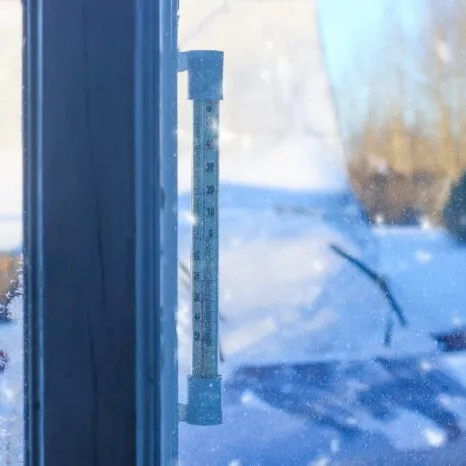
Balcony doors are the element of window joinery that we use most often. It is also usually the heaviest component, and is therefore subject to a great deal of force. Consequently, we should take proper care of the balcony doors. How do we do this? You will find out by reading to the end of our guide.
The sagging of balcony doors is a natural process that must be corrected from time to time. The same applies, for example, to the tightness of balcony doors. Windows and balcony doors are constantly subjected to stress – from the inside by opening and closing, and from the outside by sunlight, rain or strong wind. As a result, the frame and gaskets suffer the most, while the hardware itself wears out when opening and locking the sashes.
Therefore, as we have already mentioned, most of the components need to be refreshed once in a while, and the balcony doors themselves need to be adjusted. Unfortunately, owners, especially of new windows, often forget about this, while the lack of proper and regular care may lead to much faster aging of mechanisms, abrasion of protective coatings of fittings and frames or seals. As a result, the lifespan of the windows decreases, as does the comfort of use itself.
When is it necessary to adjust balcony doors?
The proper adjustment of balcony door sashes is always carried out during the installation of windows and doors. However, as with any element in the house, so with balcony doors, over time the structure works and the house itself settles. As a result, there may be small movements that make it necessary to adjust the pressure of the balcony door.
Therefore, regular adjustment of windows and balcony doors is necessary for their correct operation and comfort. In addition, the position of the door can change as a result of opening and closing or the wiping of certain components. Weather conditions also have a great influence on such changes. Balcony doors are constantly exposed to sunlight, strong winds or rain or snow. It is therefore worth checking the window and door frames before and after the winter season. By doing so, we can save on heating bills and ensure that we have much better thermal insulation.
Regulating patio doors – you can do it yourself!
As long as we have the desire and the right tools, adjusting the balcony door ourselves should not be a big problem. It’s true that adjusting the door yourself for the first time can be a bit time-consuming, but over time you’ll get the hang of it, learn the principles of adjustment and it will be much easier. But how do you go about it? Here is a step-by-step overview of the four types of adjustment.
Sash tightness adjustment
For this task, we will primarily need a V.SCH.ACP-S spanner. Admittedly, we can optionally try it with a pair of pliers, but we must then be very careful not to damage the metal parts of the door.
Once you have the right key, open the balcony door fully and find the three round strikers. The first is located at the top, the second in the middle of the leaf and the third a little lower. Using the aforementioned key, turn the chosen striker to the left or right, depending on your needs.
It is also worth remembering that when the door is installed, the strikers are in the neutral position. This means that only by turning them 90 degrees to the left or right will the door be loosened or sealed, making it more adherent to the frame.
Adjusting the sash height
If your patio door is giving you difficulty opening or closing, you may benefit from height adjustment, especially if the sash drops. If the handle works hard or the door rubs against the frame, you may need to raise it. Use an allen key to do this. The door should be ajar before adjusting.
The procedure for adjusting patio doors involves removing the cap from the lower hinge and then inserting an allen key (usually 4mm in size) into the upper hinge hole where the adjusting screw is located. Turning the key clockwise raises the sash, counterclockwise lowers it. Adjust the screw by half a turn to avoid the opposite effect.
After each adjustment of the screw, check that the door opens and closes smoothly. Repeat the process until you find the optimum setting, eliminating the difficulty of manipulating the door.
Adjusting the door horizontally
If the height adjustment does not have the desired result and the door is still causing difficulties, we can try the horizontal adjustment (left/right). This procedure also requires an Allen key (usually of the same size). Before starting the adjustment, the door should be open ajar.
To adjust the horizontal position of the door, use the same allen key, expose the adjustment screw on the side of the lower hinge and turn it half a turn, similar to the height adjustment. Check the effects after each adjustment, and repeat the operation if necessary.
Adjusting the door diagonally
If the previous methods did not pass, we still have something in store. Because in case height and level adjustments do not eliminate the difficulties, we can consider adjusting the position of the door diagonally. For this, we will also use an allen key that will fit all the screws in the door. For the diagonal adjustment, we find the adjustment screw near the top hinge, located directly against the door leaf. As with previous adjustments, we turn the screw half a turn and check the effects after each adjustment.
And what about securing the windows? What to lubricate the hardware with?
In addition to the adjustment of windows and doors, regular maintenance is also very important. This consists of several steps, and the basic one without a doubt is to lubricate the window hardware with a product that reduces friction and protects it from corrosion. For such lubrication, we can even use ordinary technical petroleum jelly, machine oil or grease – it is important that such a lubricant does not contain any acids or resins, which may cause corrosion.
When protecting the joinery, special attention should be paid to the hardware strips in the upper part of the sash. This is where most dust accumulates. In addition, check the corners, the hooks on the frame, the hinges and other areas where friction can be seen. Wipe down the rest of the hardware with a lightly oiled cloth.

Maintenance of balcony door seals
Finally, we still need to mention the proper maintenance of the door seals, which play a huge role in keeping the heat in. These are located in the frame of the leaf and frame, where they are very vulnerable to the elements, especially to the process of crumbling and cracking. The most vulnerable area is at the bottom of the frame, which is particularly exposed to sunlight, rain and dirt. This is therefore the area where the seals suffer the most wear. As a result of wear and tear, the gasket material gradually hardens, losing its elasticity, leading to cracks and the loss of the window’s ability to protect against draughts and moisture.
To avoid these problems, regular maintenance is recommended, which includes lubricating the gaskets with glycerine, machine oil or a dedicated gasket care product at least once a year. In the event of damage, it may in turn be necessary to replace the seals to maintain the full functionality of the window.

















